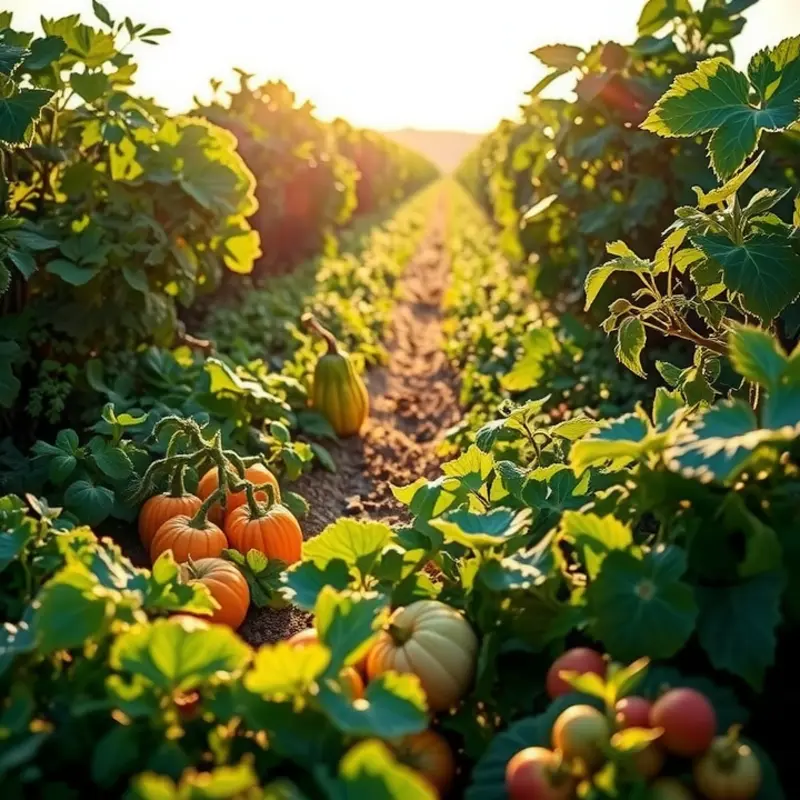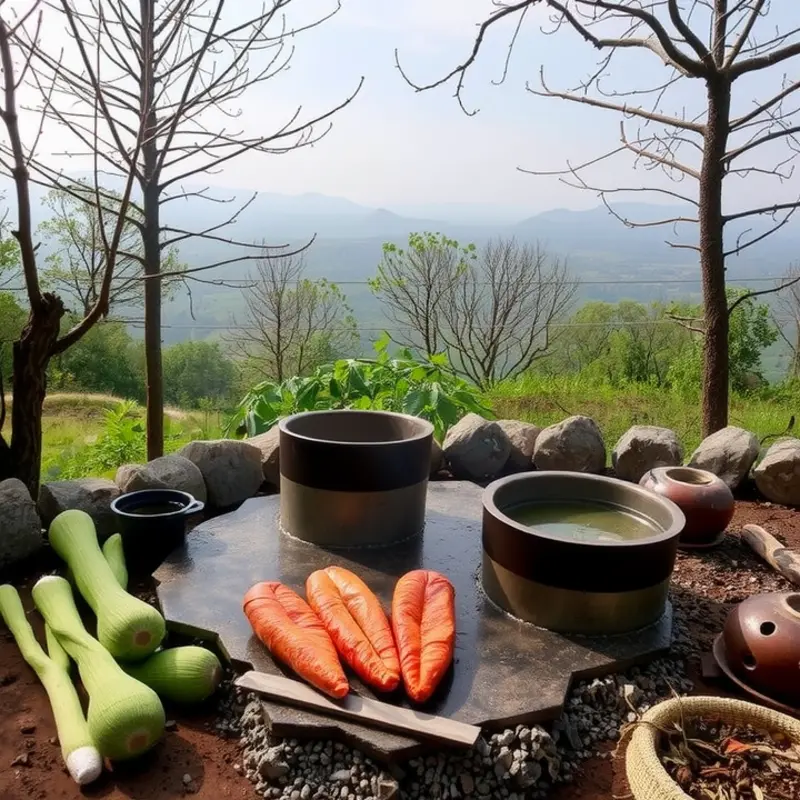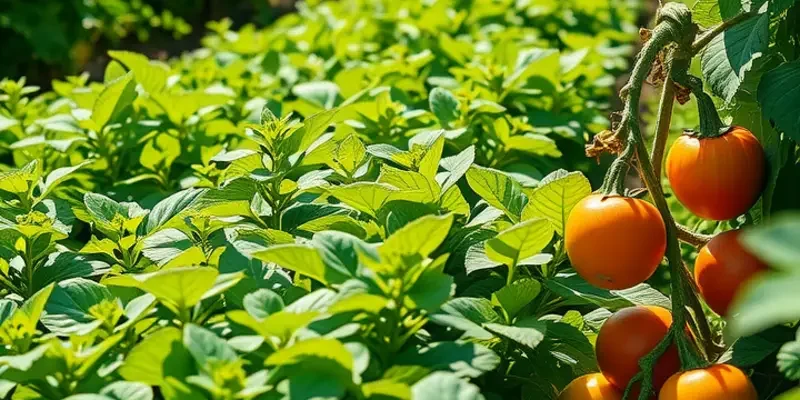Indigenous American cuisine is a tapestry of flavors as rich and diverse as the cultures themselves. Deeply rooted in tradition and sustainability, these culinary practices highlight local ingredients and ancient cooking methods that have been passed down through generations. Discovering these foods not only celebrates the heritage of Native peoples but also connects us to the environment and our shared history. Embarking on this culinary journey offers a unique opportunity to appreciate the art and wisdom behind Indigenous American cooking.
A Culinary Landscape: Ingredients That Tell a Story

Indigenous American cuisine is a vivid tapestry woven with the rich threads of regional and seasonal ingredients. These elements are far more than mere sustenance; they are cultural artifacts that connect communities to their history and environment. Central to this culinary landscape are the “Three Sisters”: corn, beans, and squash. Grown together, these plants exemplify a companion planting method that not only ensures a balanced diet but also fosters sustainable agriculture.
Corn, revered in many Indigenous cultures as a sacred plant, serves multiple roles beyond being a dietary staple. Its varieties, from sweet corn to hominy, provide foundational textures and flavors while being adaptable to various dishes. Corn’s significance extends to its role in ceremonies, embodying life and sustenance. Alongside it, beans contribute essential proteins, often replacing meat, and like corn, they come in diverse types that enhance the gamut of flavors in Indigenous cuisine.
Squash, the third sister, offers versatility and nutrition. From summer varieties with tender flesh to the hearty winter squashes that store well through cold months, this vegetable is emblematic of adaptation and resilience. In regions where the climate allows, these staples are sown in harmony with the seasons, a practice rooted in ancient wisdom and guided by environmental cues.
Beyond cultivated plants, foraging and fishing traditions are paramount to Indigenous foodways. Foraging involves collecting a wide range of wild plants such as wild rice, berries, and nuts, each with specific seasonal windows that Indigenous people carefully respect. The act of foraging is an exercise in mindfulness and sustainability, ensuring that each harvest leaves enough for future growth and community sustenance.
Fishing holds a revered place, particularly in communities near rivers, lakes, and coastal areas. From salmon runs in the Pacific Northwest to fish and shellfish along the Atlantic shores, aquatic resources are treated with reverence. Traditional fishing methods prioritize the health of fish populations and ecosystems. Speedy seafood preparation techniques enhance the cooking process, preserving freshness and nutritional value.
Wild game, too, plays a critical role, offering a source of protein that respects the natural balance. Hunting practices are steeped in rituals that honor the animal spirits, reinforcing a respectful and sustainable approach to meat consumption. Each animal is butchered and utilized fully, ensuring nothing is wasted.
In every region, these traditional ingredients embody the deep connections between Indigenous peoples and the land. Embedding their stories into the fabric of daily life, meals become more than just food. They are narratives of survival, reverence, and community cohesion, celebrating the art of living harmoniously with nature and honoring the generations who first planted, foraged, and harvested from their surroundings.
Culinary Techniques: Ancestral Wisdom on a Plate

The culinary techniques of Indigenous American cuisine are a testament to the rich traditions and deep respect for nature that define these cultures. Among these methods, roasting, smoking, and stone boiling stand out not only as ways to prepare meals but also as techniques that enhance flavors while respecting the natural environment.
Roasting, a technique that involves cooking food over an open flame or hot coals, is one of the most time-honored methods used by Indigenous peoples. It brings out the sweetness and depth of flavors in ingredients such as corn. Roasted corn is a beloved staple, renowned for its smoky taste and tender texture. This method requires skill in managing the heat and turning the cobs at the right times to achieve a golden-brown finish. Roasting truly transforms basic ingredients, making them a nourishing delight.
Smoking, another ancient technique, is not just a method of preservation but also of flavor enhancement. Smoking fish over a low, smoldering fire imbues it with a deeply rich and complex flavor. This technique is essential for dishes like smoked salmon or trout, which are not only culinary delights but also a celebration of heritage. The use of specific woods, such as cedar or alder, adds distinctive notes, subtly transforming the character of the fish.
Stone boiling is less known but equally significant. This method involves heating stones and placing them into a container of water to transfer heat without direct contact with flames. Stone boiling is perfect for soups and stews and demonstrates an innovative approach to cooking using available resources. Techniques like these underline the ingenuity of Indigenous cultures, utilizing methods that are both efficient and respectful of nature’s offerings.
Each technique reflects a broader connection with the land. The choice of ingredients is often as much about flavor as it is about sustenance and sustainability. By harvesting local produce, fish, and game, Indigenous peoples maintain harmony with their surroundings. Roasting, smoking, and stone boiling are not simply cooking methods; they are expressions of a lifestyle that values the Earth. This respect ensures that the culinary traditions continue to thrive and evolve while remaining anchored in historical wisdom. To explore incorporating similar traditional practices into modern cooking, see eco-smart kitchen storage methods that align with these sustainable principles.
The art of Indigenous American cuisine is about more than taste; it’s a connection to history, culture, and the planet. Each meal tells a story of the past while nurturing connections to the present, inviting a thoughtful consideration of where our food comes from and the best ways to honor it.
Final words
Indigenous American cuisine is much more than a collection of recipes; it represent a worldview that honors the land and its gifts. Through understanding and embracing the ingredients and techniques, we not only savor unique flavors but also deepen our connection to Indigenous cultures and traditions. Every bite holds a story, each dish a reflection of a rich heritage that continues to thrive despite challenges. As food enthusiasts, exploring Indigenous cuisine offers us an avenue to appreciate, respect, and celebrate the incredible diversity encompassing the culinary arts across the globe. Let this culinary journey be both enlightening and delicious, reminding us all of the importance of preserving and celebrating cultural traditions.








